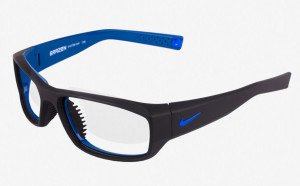The importance of wearing radiation glasses during a procedure

For many healthcare workers using x-ray radiation, particularly those doing diagnostic CT imaging, potential exposure is handled by retreating to a shielded control room during the time the x-ray source is energized. For some workers, however, removing themselves completely from the source of radiation is not possible. Examples are doctors, nurses, and technicians engaged in interventional radiology procedures. Occupational exposure is typically not the result of exposure to the primary x-rays administered to the patient, but scattered x-rays coming from the patient or other objects. X-rays can scatter multiple times and at different angles, so not being in the line of sight of the primary source does not eliminate exposure. Medical workers instead wear protective equipment, such as lead aprons, and neck collars to protect the thyroid. It is also important to consider using appropriate eyewear protection, such as Infab radiation glasses.
Different types of human tissue differ in how radiation exposure affects them, with regenerating tissue generally being the most sensitive. While the brain is relatively insensitive to radiation damage, the eye lens is very sensitive. This sensitivity is specifically related to the epithelium cells on the surface of the eye lens, which are continually dividing. Studies on human populations who have received high radiation exposure to their eyes have shown that opacities develop in the eye lens over time, which degrades vision.
A recent study of medical professionals involved in interventional catheterization using x-ray guidance found changes in 50% of interventional cardiologists and in 41% of nurses and technicians, compared with similar findings in less than 10% of control subjects. These excess findings were attributed to a cumulative eye lens radiation exposure over many years of work without eye protection.
Because of this sensitivity, there are specific occupational exposure limits for the eye lens, just as there are specific limits for skin dose, in addition to the overall recommended exposure limits. The limits for eye lens exposure have been tightened in recent years, as a result of reports of eye lens opacities appearing at levels of exposure below the older limits. The current recommendation of the International Commission on Radiological Protection (ICRP) is a limit for occupational exposure to the lens of the eye of 20 mSv per year averaged over 5 years, but not to exceed 50 mSv in any single year. This represents a permitted occupational exposure that is seven times lower than the prior recommendation.
Whereas sometimes the use of specific protective equipment needs to be balanced against how it might impede the conduct of the medical procedure in question, this need not be an issue with properly-sized eyewear protection. Therefore protective eyewear should always be worn in accordance with the ALARA principle of minimizing radiation exposure. ALARA stands for “as low as (is) reasonably achievable”, as defined by the U.S. Nuclear Regulatory Commission, and implies every reasonable measure should be taken to minimize radiation exposure. Ensuring radiation workers wear suitable protective eyewear, such as Infab lead glasses, would be an example of applying the ALARA principle.
Infab lead glasses contain the equivalent of 0.75mm of lead in terms of their ability to attenuate x-ray radiation. For 120 keV x-rays (typically the highest energies encountered in most x-ray procedures) this translates into attenuating 95% of the incident radiation. For lower energies, such as scattered x-rays, the attenuation effect is even greater.
References:
Radiation-associated lens opacities in catheterization personnel: results of a survey and direct assessments. J Vasc Interv Radiol. 2013 Feb; 24(2):197-204.
ICRP, 2007. The 2007 Recommendations of the International Commission on Radiological Protection. ICRP Publication 103. Ann. ICRP 37 (2-4).
